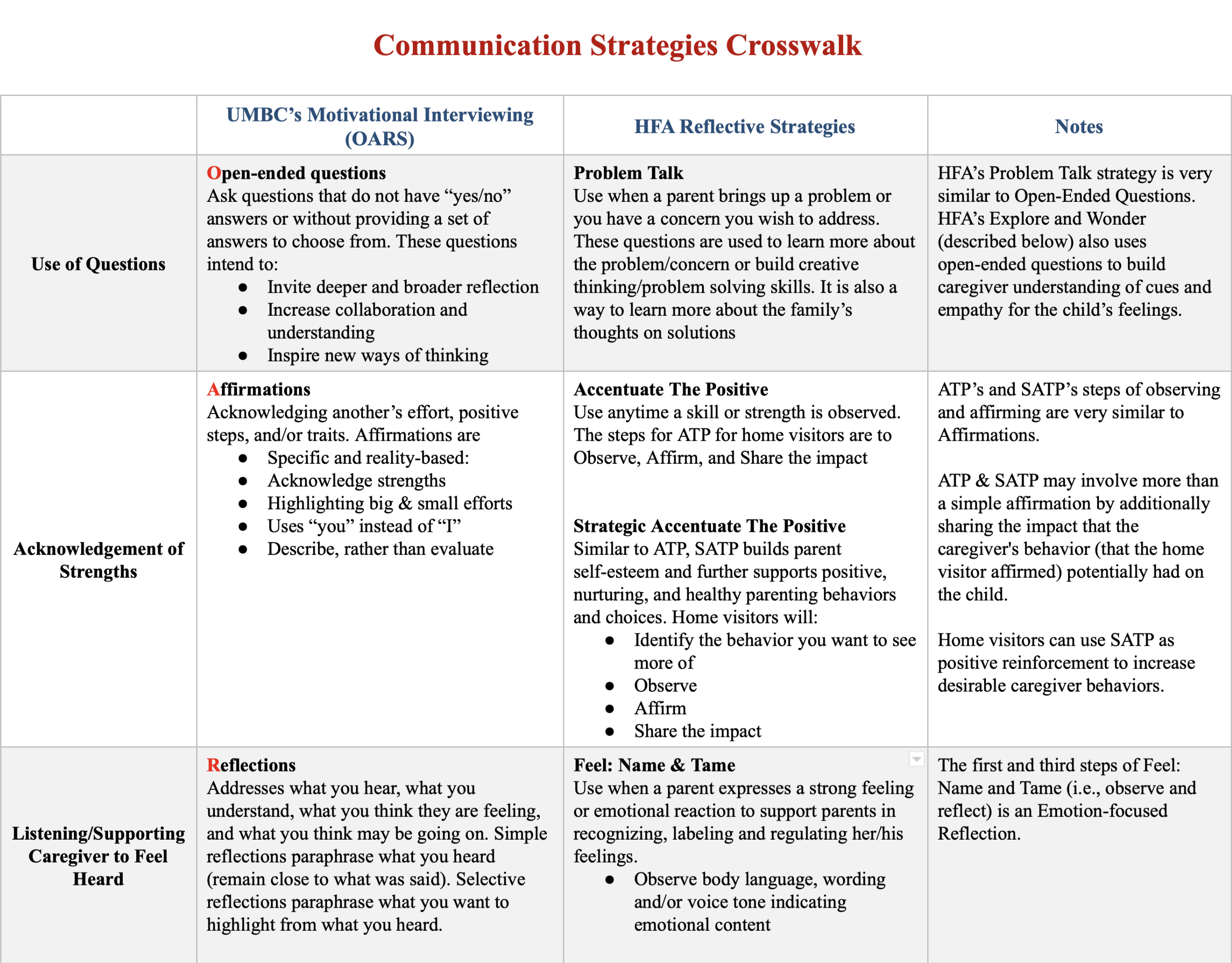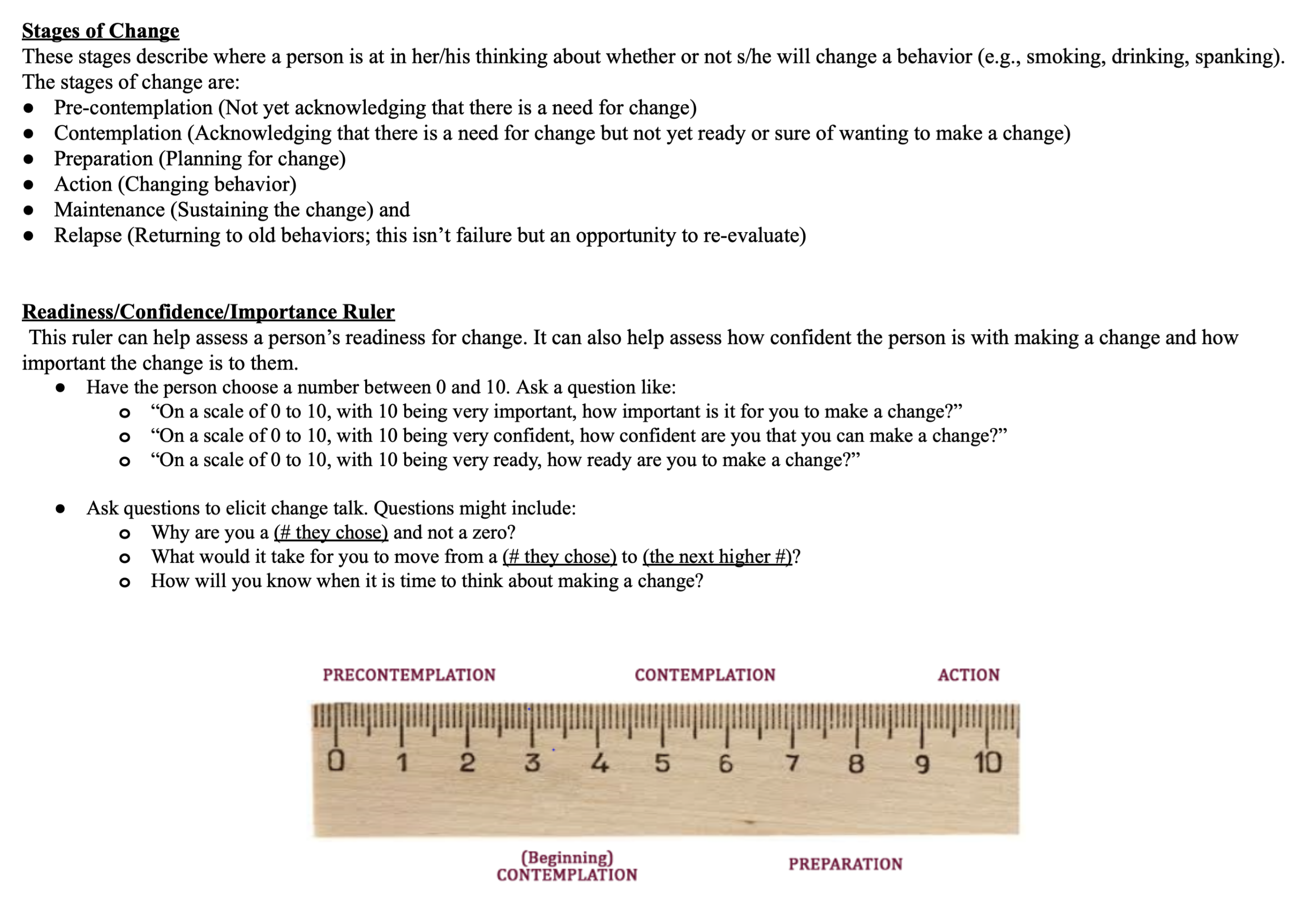Resources
Recommendations
The attached article describes lessons learned from conducting focus groups with supervisors and home visitors in Missouri. It provides a very nice overview of the many and varied ways home visitors need and want support from their supervisors.
Types of Supervision
Many describe three types of supervision: administrative, clinical, and reflective.
- Administrative supervision refers to the oversight of procedures, policies, and rules, such as ensuring program model policies are followed (e.g., contacting families at the required frequency, following assessment timelines), agency and program model paperwork is completed, training needs and requirements are met, etc.
- Clinical supervision focuses on the home visitors’ plans and strategies with their families. Among other things, this includes the process of setting family goal plans, reviewing the strategies the home visitor uses and plans to use to help the family reach these goals, implementing curriculum, evaluating progress toward these goals, and collaborating to problem solve challenges with families.
- As described above, reflective supervision focuses on feelings and relationship dynamics within a family, between the home visitor and family, and between the home visitor and colleagues, including the supervisor. A particular emphasis is placed on the home visitor’s feelings about different aspects of their work and relationships and how these might impact the home visitor’s effectiveness.
Clinical supervision and reflective supervision overlap significantly, as the clinical supervision focus on discussing plans for working with families will necessarily involve consideration of relationship dynamics between family members and between the home visitor and family members. Whereas the primary goal of clinical supervision is to develop effective plans for working with families, however, the primary goal of reflective supervision is to support the home visitor in the often emotionally-challenging work they do.
Different agencies will have different approaches to ensuring that all three types of supervision occur. Most typically, a single supervisor will fill all three roles (i.e., administrative supervisor, clinical supervisor, and reflective supervisor) within a single supervision session by switching approaches as needed. In some cases an agency might have a separate person provide reflective supervision, and/or reflective supervision occurs in a group format. In either case, it is important that supervision occurs on a regular basis and that not only the agency’s administrative needs but also the home visitor’s need for collaborative reflection and support are addressed.
Parallel Process
One important component of supervision is parallel process. Parallel process occurs when either: 1) the way in which the supervisor acts toward the home visitor influences how the home visitor acts toward the family, or 2) the home visitor brings the interaction pattern that occurred with the family into the supervisor relationship, but with the home visitor acting in a similar way that the family did. Related to this first process, Jeree Pawl (1998) wrote, “Do unto others as you would have others do unto others.” This is an important consideration for helping the home visitor both focus on parent-child interactions and use reflective practice. In exit interviews with supervisors after the pilot of our program, we heard examples of this parallel process in action, with supervisors reporting that they used reflective practice more with their home visitors in supervision and then saw their home visitors similarly using reflective practice more often with their families.
Training Terms Crosswalk
The list below compares motivational interviewing terms we use in our UMBC trainings with reflective strategies described by Healthy Families America (HFA). This list may help coaches and supervisors discuss the techniques supervisors use. Below that list is a description of the Stages of Change, which is a model for helping determine where a person is in the process of thinking about changing a behavior, such as changing a parenting practice or quitting smoking.


